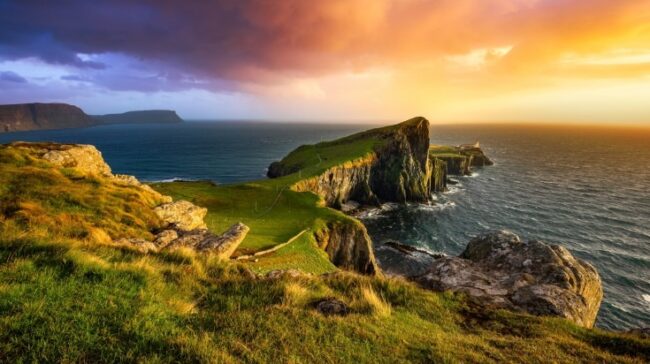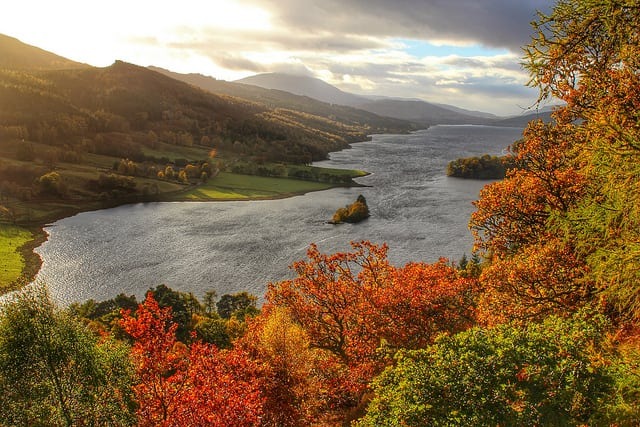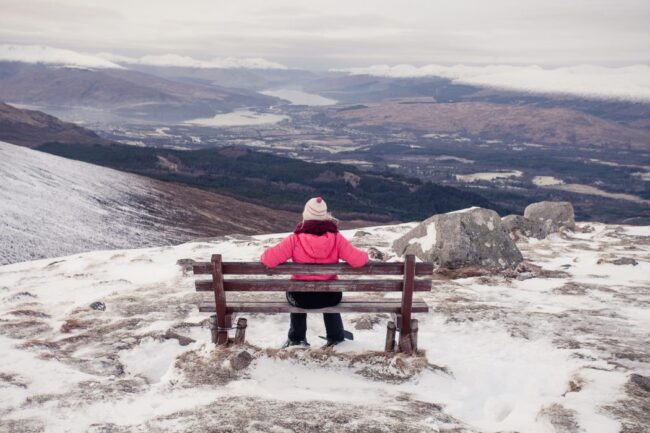Scotland’s charm evolves with each season, offering a unique mix of colors, events, and experiences. From spring’s heather to autumn’s crisp air, timing a trip makes a real difference.
Exploring the highlands or Edinburgh’s streets is smoother with smart planning and easy mobile access that avoids local SIMs or constant Wi-Fi hunts.
Spring (March to May): Gentle Weather and Blossoming Landscapes

Spring in Scotland brings milder weather and longer days, with temperatures rising from around 6°C in March to 15°C by May. For those planning open-air walks or countryside escapes, having a Scotland esim ready upon arrival helps with staying online in less connected areas.
Although the weather can be unpredictable, with sudden rain or wind, the fresh greenery and blooming flowers bring landscapes to life.
Crowds remain light during these months, especially in early spring. Popular destinations like the Isle of Skye or Loch Lomond are far less crowded than in peak summer, offering a quieter experience. Many walking trails become accessible again, and accommodation is generally easier to book at reasonable rates.
Events like the Beltane Fire Festival in Edinburgh offer a lively cultural glimpse into Scotland’s Celtic heritage. While venturing across regions, having access to mobile data ensures reliable connectivity after arrival, which proves especially helpful in rural or remote areas.
Summer (June to August): High Energy and Long Days

Summer draws the largest number of visitors. With temperatures averaging between 15°C to 20°C, days are long and ideal for outdoor adventures.
June’s solstice brings up to 18 hours of daylight in northern regions, giving plenty of time to explore national parks, beaches, and ancient ruins.
Expect crowds at major landmarks and higher prices for flights and accommodations. Booking early becomes essential during this season.
In cities like Edinburgh, the energy is electric, with events such as the Edinburgh Fringe Festival and the Royal Edinburgh Military Tattoo drawing visitors from across the world.
Wildlife spotting is excellent during summer. Puffins, seals, and even dolphins can be seen along the coastlines.
It’s also peak season for hiking, especially on popular routes like the West Highland Way. While network signals are generally stable in towns, they may drop in the countryside.
Reliable mobile access allows travelers to use maps and event schedules without depending on unstable hotel Wi-Fi.
Autumn (September to November): Colorful Scenery and Fewer Tourists

Autumn paints the landscape with golds and reds as the leaves change color. This season offers a quieter, reflective version of Scotland.
September remains relatively mild, with temperatures ranging from 10°C to 17°C, while November becomes noticeably colder.
Tourist crowds begin to thin after August, making it easier to explore places like the Cairngorms or Glen Coe without the summer rush.
Lodging has become more affordable, and restaurants are less crowded, offering a more relaxed pace of travel.
Highlights of visiting Scotland in autumn include:
- Stunning fall colors across national parks, woodlands, and lochs, perfect for photographers and nature lovers.
- Halloween events rooted in Celtic folklore, adding a magical and historical touch to local celebrations.
- Seasonal whisky tours at distilleries, where visitors can enjoy special tastings and behind-the-scenes experiences.
- Quieter hiking trails with cooler temperatures ideal for long walks without the summer heat.
- Better value accommodation as hotels and inns lower prices outside the peak season.
October brings Halloween festivities steeped in Scottish folklore, especially in areas with strong Celtic traditions. It’s also a great time for whisky lovers, as many distilleries host seasonal tastings and tours.
With fewer daylight hours, good planning becomes more important. Access to real-time weather updates or itinerary changes can be a useful advantage for smoother travel.
Winter (December to February): Quiet Escapes and Festive Cheer

Winter in Scotland is cold, with average temperatures between 0°C to 5°C. Snowfall is common, especially in the Highlands, attracting visitors to ski resorts like Glenshee and Cairngorm Mountain.
Though daylight hours are short, there’s a calm magic to the season.
Major cities light up with Christmas markets and Hogmanay celebrations. Edinburgh’s New Year festivities are world-famous, featuring fireworks, live music, and traditional dancing.
In contrast, the countryside offers a peaceful retreat, with cozy inns and frosted landscapes.
Due to the low number of tourists, winter travel feels intimate. Flights and accommodations can also be more affordable during this time.
Those venturing into remote regions should note that public transportation may be limited. In such cases, using online schedules or booking tools becomes helpful for adjusting travel plans.
Best Time for Outdoor Activities and Sports
Scotland’s varied climate means the best time for outdoor activities largely depends on what you want to do. For hikers and cyclists, late spring through early autumn (May to September) offers the most reliable weather.
Trails like the West Highland Way or the North Coast 500 present stunning views with manageable conditions, though it’s always wise to check forecasts as weather can change quickly.
Having a Scotland esim ensures you can access up-to-date trail information or safety alerts while in more isolated regions.
Here’s a quick guide on timing for some of the most popular outdoor activities:
- Hiking and cycling: May to September offers longer days, stable paths, and less chance of heavy rain.
- Water sports: June to August brings warmer waters and calmer seas, ideal for kayaking, paddleboarding, and sailing.
- Skiing and snowboarding: January and February provide the best snow coverage in resorts like Glenshee and Cairngorm Mountain.
- Golfing: Late spring and early autumn give mild temperatures, fewer crowds, and beautifully maintained courses.
- Wildlife watching: Summer is excellent for spotting puffins, seals, and dolphins along the coasts.
Whatever the activity, seamless mobile data helps ensure smooth navigation, quick bookings, and real-time updates—especially useful when weather or conditions shift during your adventure.
Festival Calendar: A Year of Celebration

Scotland’s cultural calendar brings each season to life. Spring features local food fairs and Highland Games in smaller towns.
Summer lights up with major events like the Fringe and TRNSMT in Glasgow. Autumn offers literary gatherings such as the Wigtown Book Festival.
Winter highlights traditional music and storytelling during Celtic Connections in January.
Each festival reflects deep-rooted traditions alongside fresh cultural energy.
During busy festival periods, it’s wise to book accommodations early. Reliable data access also makes it easier to navigate event venues and check for updates while on the go.
Final Thoughts
Scotland welcomes travelers year-round with its shifting seasons, vibrant festivals, and stunning natural beauty.
From the lively summer crowds to the peaceful charm of winter, each period offers something unique for every kind of visitor.
Planning a trip with the right timing enhances both comfort and experience.
Staying connected on the move, especially in remote areas or during peak events, becomes easier with a Scotland esim, offering seamless data access right after arrival.
Whether chasing autumn colors or joining a midsummer celebration, the best time to visit depends on the kind of adventure in mind.
